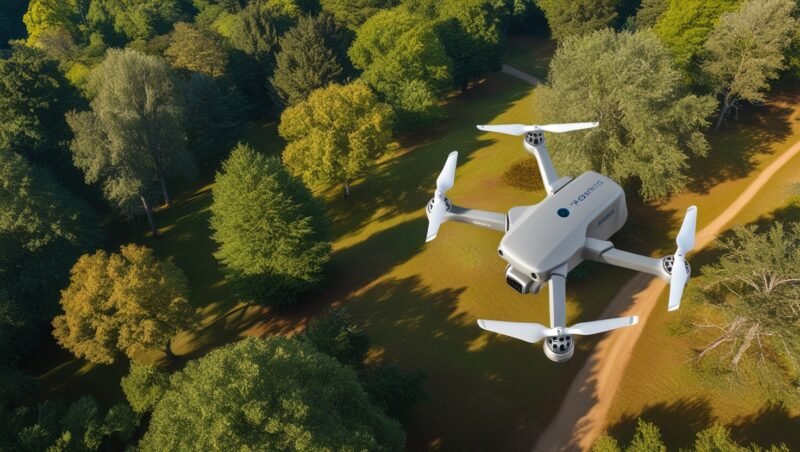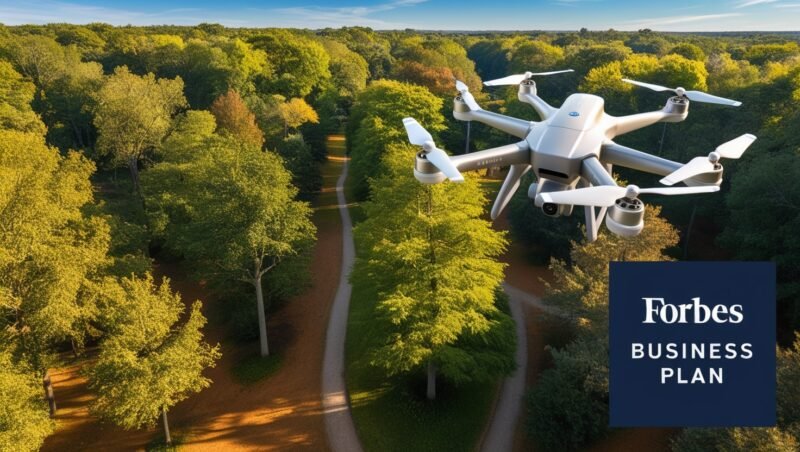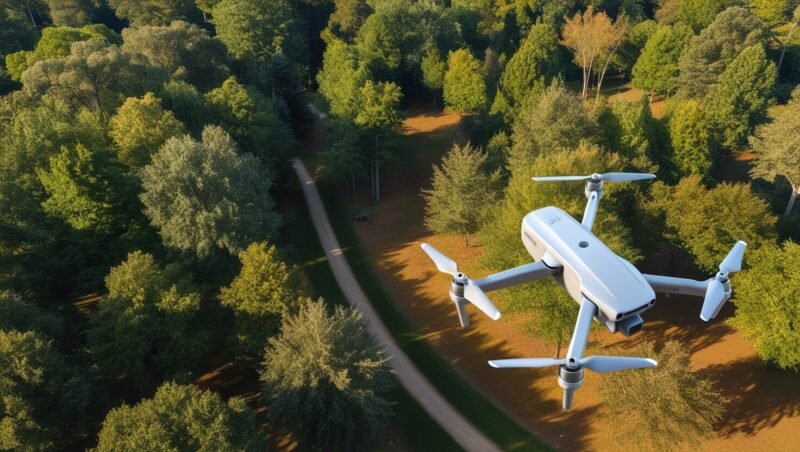The Lubrecht Experimental Forest FAA UAV Drone in Research

The Lubrecht Experimental Forest FAA UAV Drone, a cornerstone of environmental research in Montana, has become an essential site for studying forest dynamics, ecology, and land management practices. With the growing use of advanced technologies, such as Unmanned Aerial Vehicles (UAVs) or drones, the forest has become a key testing ground for new research methods. This article delves into the crucial role of the Lubrecht Experimental Forest, focusing on how FAA-approved UAV drones are reshaping how we study and manage forests.
What is the Lubrecht Experimental Forest?
The Lubrecht Experimental Forest is a vast research area in the heart of Montana, covering over 28,000 acres of diverse landscapes. It serves as a laboratory for scientists studying forest ecosystems, wildlife, and land management techniques. The University of Montana manages the forest and is used for long-term research on forest health, fire behavior, and carbon sequestration. The forest is recognized for its rich biodiversity, and it offers researchers a unique opportunity to study the interaction between ecosystems and various environmental stressors.
FAA UAV Drones in Forest Research
Uncrewed Aerial Vehicles (UAVs), more commonly known as drones, have gained significant popularity in environmental research. These aerial devices are equipped with cameras, sensors, and other technology to collect large amounts of data from hard-to-reach areas. In the Lubrecht Experimental Forest context, FAA-approved UAV drones have revolutionized forest research. The Federal Aviation Administration (FAA) has played a key role in regulating the use of drones in the United States to ensure they are used safely and responsibly.

The Importance of FAA Approval for UAV Drones
FAA certification is critical for ensuring that UAVs comply with federal regulations. When the FAA approves a drone, it meets specific safety standards and can operate in designated airspace. Researchers using FAA-approved UAV drones in the Lubrecht Experimental Forest can fly their drones within the legal parameters set by the government. This approval is not just a formality; it ensures that the drones do not interfere with other air traffic, which is especially important in busy or restricted airspace.
How UAV Drones Are Used in the Lubrecht Experimental Forest
UAV drones play a pivotal role in modern forest research. In the Lubrecht Experimental Forest, they gather high-resolution imagery, monitor forest health, track wildlife, and assess vegetation. By flying at varying altitudes, these drones can capture detailed images of the forest canopy, which helps scientists track changes in forest density, tree growth, and canopy cover. The ability to take real-time, bird’ s-eye-view photos and videos provides a comprehensive understanding of the forest’s condition.
In addition to visual data, the drones are equipped with various sensors that collect other forms of information, such as thermal imaging, LiDAR (Light Detection and Ranging), and multispectral data. These sensors help scientists monitor temperature fluctuations, detect moisture levels, and assess the health of individual trees. With these advanced tools, UAV drones enable researchers to gather more precise and accurate data than traditional methods.
Benefits of Using UAV Drones for Forest Monitoring
Using FAA UAV drones in the Lubrecht Experimental Forest offers several advantages over traditional research methods. One of the most significant benefits is the ability to collect data from otherwise inaccessible areas. Forests, especially dense ones, can be challenging to study from the ground, as researchers may not be able to reach certain regions due to steep terrain or thick vegetation. UAV drones eliminate these barriers by providing a safe and efficient way to capture data from above.
Another benefit is the speed and efficiency with which drones can gather data. Unlike ground-based surveys, which can take days or even weeks to complete, UAV drones can cover vast areas in a fraction of the time. This speed saves time and allows researchers to gather more data over a larger area, leading to more comprehensive results. Additionally, drones can be flown multiple times over a short period, enabling continuous monitoring of the forest and providing up-to-date information.

Enhancing Forest Management with UAV Drones
The Lubrecht Experimental Forest is a research site and an essential location for developing new forest management strategies. UAV drones are valuable tools for forest managers who want to make informed decisions about land use and conservation efforts. By monitoring the forest’s health with drones, managers can identify areas that require intervention, such as regions affected by pests, diseases, or invasive species. UAV drones can also assist in planning controlled burns, providing a clear view of the terrain and vegetation before, during, and after the burn.
In addition, drones can map the spread of wildfires, critical for understanding fire behavior and planning firefighting efforts. With real-time data from UAV drones, forest managers can make quicker decisions and respond more effectively to emerging threats. Tracking changes in the forest’s condition over time allows forest managers to anticipate problems and take preventive measures before they escalate.
UAV Drones and Ecological Research at Lubrecht Experimental Forest
Ecological research at the Lubrecht Experimental Forest focuses on understanding how different environmental factors affect the growth and survival of plant and animal species. UAV drones contribute significantly to these studies by providing detailed images and data to monitor biodiversity and ecosystem health. For example, scientists studying forest regeneration can use drones to track new vegetation growth after a disturbance, such as a fire or logging event.
Additionally, drones can be equipped with sensors to monitor wildlife populations. By capturing images of animal tracks, nests, or other signs of life, researchers can estimate population sizes and track movements. UAV drones are also valuable for studying rare or hard-to-reach species, such as birds or small mammals, without disturbing their natural habitat. This non-intrusive data collection method is crucial for preserving the integrity of ecosystems while still gathering valuable research data.
The Future of UAV Drones in Forest Research
The use of FAA UAV drones in the Lubrecht Experimental Forest is just the beginning of a new era in forest research. As drone technology advances, the capabilities of these devices will only improve, leading to even more sophisticated data collection techniques. Future UAV drones can collect additional data types, such as soil moisture levels, nutrient content, and carbon emissions, further enhancing researchers’ ability to monitor forest health.
Moreover, the growing use of artificial intelligence (AI) and machine learning algorithms will enable drones to process and analyze data in real time. This could significantly speed up the research process and allow for more immediate decision-making. By integrating UAV drones with other technologies, such as satellite imagery and ground sensors, researchers can create highly accurate forest ecosystem models, leading to better predictions and more effective management strategies.

Challenges and Considerations for UAV Drone Use
Despite the many advantages, there are also challenges associated with using FAA UAV drones in forest research. One of the primary concerns is the limited flight time of drones, which can be affected by battery life and weather conditions. Although drones can cover large areas quickly, their operational range is still restricted compared to human-crewed aircraft. Researchers must carefully plan their flights to maximize efficiency and collect as much data as possible within the available time.
Additionally, collecting and analyzing drone data requires specialized software and expertise, which can add complexity and cost to research projects. Researchers must be trained to operate drones and analyze the vast amounts of data they collect. This can create a steep learning curve for newcomers to the field, although the increasing availability of user-friendly tools is helping to address this challenge.
Conclusion: The Impact of FAA UAV Drones on Forest Research
The Lubrecht Experimental Forest FAA UAV Drone exemplifies how modern technology transforms forest research, particularly FAA UAV drones. These drones enhance the speed and accuracy of data collection and enable researchers to study forest ecosystems in previously impossible ways. With their ability to monitor forest health, track wildlife, and assist in forest management, UAV drones are poised to play an increasingly important role in the conservation and management of forests worldwide.
As drone technology continues to evolve, its use in environmental research will likely expand, providing new insights into the complex dynamics of our planet’s ecosystems. The Lubrecht Experimental Forest will undoubtedly remain at the forefront of these advancements, serving as a crucial site for testing and refining the use of UAV drones in forest research.





